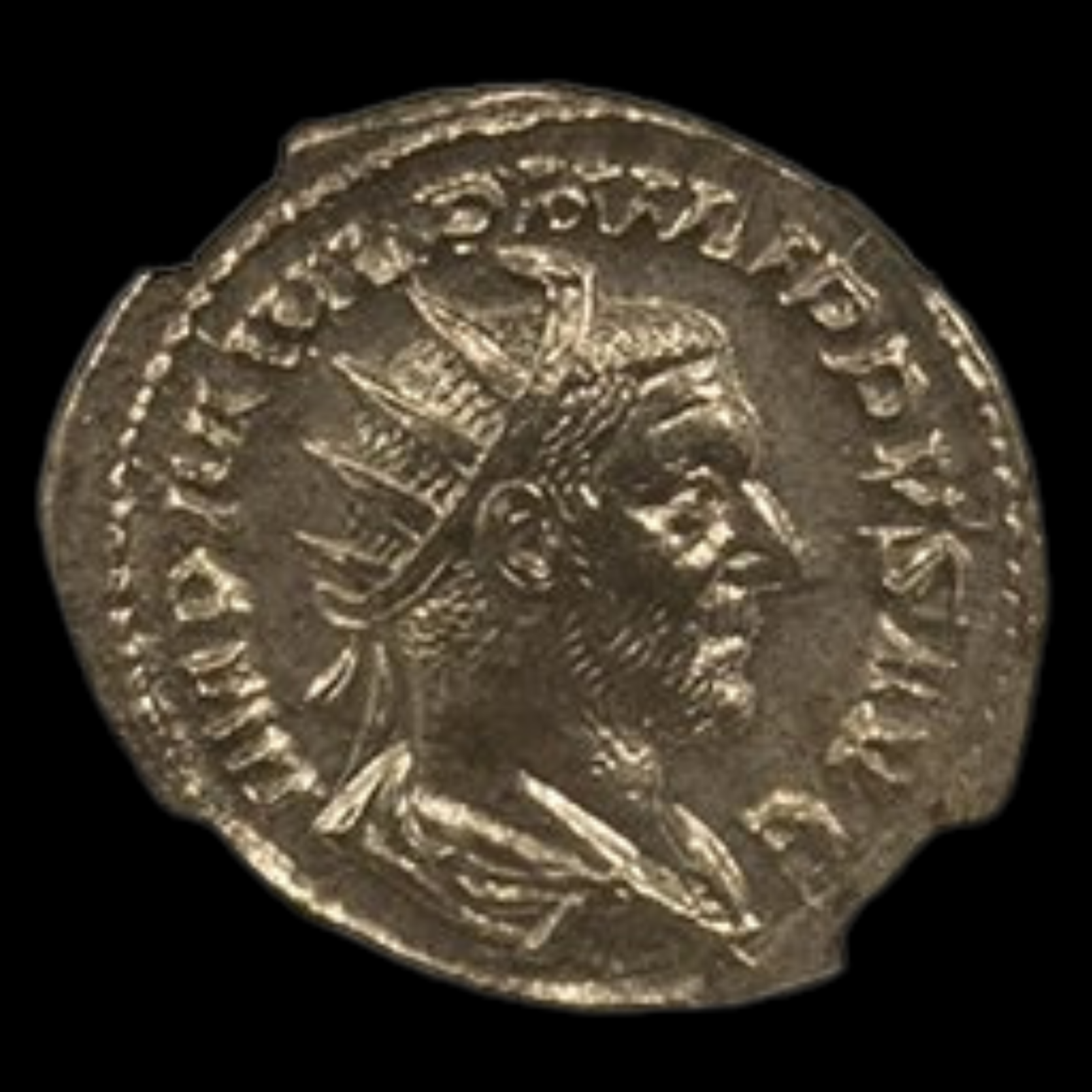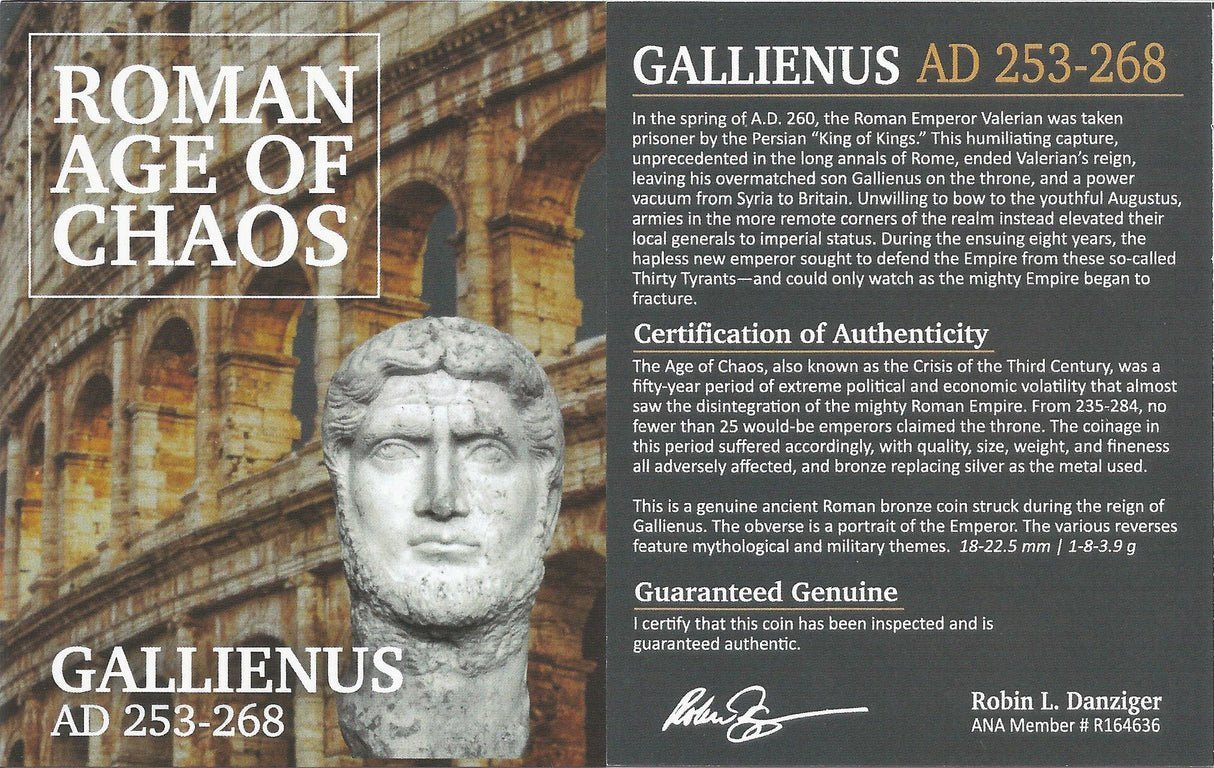 Image 1 of 8
Image 1 of 8

 Image 2 of 8
Image 2 of 8

 Image 3 of 8
Image 3 of 8

 Image 4 of 8
Image 4 of 8

 Image 5 of 8
Image 5 of 8

 Image 6 of 8
Image 6 of 8

 Image 7 of 8
Image 7 of 8

 Image 8 of 8
Image 8 of 8









Roman Bronze Coin of Constantius II (about 1665-1710 years ago)
The coins shown are representative examples of the grade and type, but not the actual specimens for sale. For details on NGC’s grading standards and definitions, please refer to our NGC Grading page.
This bronze coin was issued during the long reign of Emperor Constantius II, son of Constantine the Great and a ruler who presided over a crucial transitional period in the Roman Empire. Minted in the mid-4th century CE, this coin reflects the changing religious and political landscape as Christianity became increasingly dominant throughout the Roman world.
Coin Description:
Front side: Portrait of Emperor Constantius II facing right, typically shown wearing a pearl diadem or rosette crown rather than the traditional laurel wreath, surrounded by Latin text identifying him with his imperial titles
Back side: Likely features military or Christian imagery, possibly including soldiers with standards, Victory personifications, or the Chi-Rho symbol (☧) that represented Christianity, with mint marks below
Technical Details:
Bronze alloy composition
AE3/4 denomination (modern collector terminology for small bronze coins of this period)
RIC (Roman Imperial Coinage) reference number not visible in description
NGC (Numismatic Guaranty Corporation) certified
Minted approximately 337-361 CE (after being elevated from Caesar to Augustus)
Fine condition (showing typical wear from circulation)
Historical Significance:
This coin circulated during a pivotal era when the Roman Empire was undergoing fundamental transformation. Constantius II, elevated to the rank of Caesar (junior emperor) at just seven years old, eventually became sole ruler after the deaths of his brothers. Known for his political ruthlessness, he eliminated potential rivals including many family members. These coins were used throughout an empire where Christianity was becoming increasingly dominant, though Constantius supported the Arian interpretation of Christianity rather than what would become orthodox doctrine. During his reign, he confronted ongoing threats from Germanic tribes and Sassanid Persia while also dealing with internal religious conflicts. His governance from his power base in Antioch (modern Turkey/Syria region) reflected the empire's continuing shift eastward, a process begun by his father Constantine with the founding of Constantinople.
The coins shown are representative examples of the grade and type, but not the actual specimens for sale. For details on NGC’s grading standards and definitions, please refer to our NGC Grading page.
This bronze coin was issued during the long reign of Emperor Constantius II, son of Constantine the Great and a ruler who presided over a crucial transitional period in the Roman Empire. Minted in the mid-4th century CE, this coin reflects the changing religious and political landscape as Christianity became increasingly dominant throughout the Roman world.
Coin Description:
Front side: Portrait of Emperor Constantius II facing right, typically shown wearing a pearl diadem or rosette crown rather than the traditional laurel wreath, surrounded by Latin text identifying him with his imperial titles
Back side: Likely features military or Christian imagery, possibly including soldiers with standards, Victory personifications, or the Chi-Rho symbol (☧) that represented Christianity, with mint marks below
Technical Details:
Bronze alloy composition
AE3/4 denomination (modern collector terminology for small bronze coins of this period)
RIC (Roman Imperial Coinage) reference number not visible in description
NGC (Numismatic Guaranty Corporation) certified
Minted approximately 337-361 CE (after being elevated from Caesar to Augustus)
Fine condition (showing typical wear from circulation)
Historical Significance:
This coin circulated during a pivotal era when the Roman Empire was undergoing fundamental transformation. Constantius II, elevated to the rank of Caesar (junior emperor) at just seven years old, eventually became sole ruler after the deaths of his brothers. Known for his political ruthlessness, he eliminated potential rivals including many family members. These coins were used throughout an empire where Christianity was becoming increasingly dominant, though Constantius supported the Arian interpretation of Christianity rather than what would become orthodox doctrine. During his reign, he confronted ongoing threats from Germanic tribes and Sassanid Persia while also dealing with internal religious conflicts. His governance from his power base in Antioch (modern Turkey/Syria region) reflected the empire's continuing shift eastward, a process begun by his father Constantine with the founding of Constantinople.































